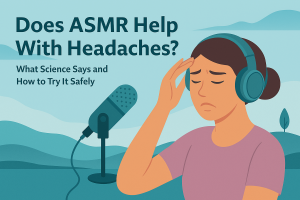Let’s be honest—waking up in a world on fire is overwhelming. Between air quality alerts, news of vanishing ecosystems, and rising seas, it’s no wonder many of us feel climate grief before we even have coffee.
But what if you could ground yourself in just 10 minutes a day and reclaim your calm?
This is your daily fix: a mindful, eco-anxiety-relieving routine designed specifically for our fast-paced, planet-stressed lives. No apps, no gear, no yoga mats required. Just you, your breath, and the willingness to pause. Whether you’re a burnt-out activist, a concerned parent, or someone who just wants to feel okay in a changing world—this is for you.
Understanding the Link Between Mindfulness and Eco-Anxiety Relief
What is Eco-Anxiety and Why Is It So Draining?
Eco-anxiety is the persistent worry about environmental decline, especially related to climate change. It’s not a diagnosis, but it’s very real. You might feel it as dread scrolling climate news, guilt over using plastic, or helplessness during a summer heatwave. This anxiety is constant, because the problem feels constant—and unsolvable.
Over time, eco-anxiety exhausts your mental reserves. It keeps your nervous system in a low-grade state of fight-or-flight. That’s why it drains your focus, your mood, even your sleep. You’re mentally preparing for disaster 24/7—even if it’s just through headlines and hashtags.
How Mindfulness Calms the Climate-Fear Brain
Mindfulness isn’t about ignoring the crisis. It’s about giving your brain and body a breather so you can face it again. When you practice mindfulness, you train your attention to stay in the present—not in future catastrophes or past regrets.
It slows your breath, lowers cortisol, and helps regulate the amygdala (the fear center of your brain). That shift from “Oh no, what if…” to “Right now, I’m okay” is powerful. And it doesn’t take hours—it can happen in minutes.
Scientific Backing: Why It Works in Just 10 Minutes
Studies show that even brief mindfulness practice—10 minutes or less—can significantly reduce anxiety symptoms, lower heart rate, and improve mood. You don’t need to be a monk or meditate on a mountain. A few mindful breaths, done consistently, can retrain your nervous system to find safety again.
Setting Up Your Mindful Space for Maximum Impact
Creating a Mini Sanctuary at Home
You don’t need a soundproof studio or incense clouds to practice. Just find a quiet(ish) space where you won’t be interrupted. This could be a windowsill, a corner chair, a spot on the floor near your favorite plant. The key is making it yours.
You might add:
- A candle or calming scent
- A natural object like a stone or leaf
- A photo of a place in nature you love
These elements signal to your brain: “This is my reset zone.”
Best Times and Places to Practice Daily
Consistency beats perfection. Morning routines help set the tone for your day. Midday sessions reset your focus. Evening practices help release tension. Choose what fits your life.
Pro tip: link your routine to something you already do—right after brushing teeth, before checking email, or right before bed. Make it as automatic as scrolling Instagram.
Items That Enhance the Experience (But Aren’t Required)
If you like using tools, try:
- Noise-canceling earbuds or calming music
- A small journal for post-practice reflection
- An app like Insight Timer (free) to guide you
But remember: your breath and your presence are the only tools you need.
The 10-Minute Eco-Anxiety Relief Routine
This routine is structured but flexible. Feel free to adjust the timing or repeat certain parts. The goal is to feel grounded and reconnected to yourself and the Earth—not to “do it right.”
Minute 1-2: Grounding Breath Awareness
- Sit comfortably. Close your eyes or soften your gaze.
- Inhale slowly for 4 counts, hold for 2, exhale for 6.
- Notice your body. Feel your feet, your seat, your breath.
Repeat this for two minutes. Each exhale is a release. Each inhale is an invitation.
Minute 3-4: Nature Visualization Practice
- Picture a natural space that brings you peace. A forest, beach, garden—anywhere.
- Visualize the textures, colors, sounds. Let it surround you.
- Imagine yourself there, safe and connected.
Let your nervous system rest in that space. Nature is in your mind, not just outside your door.
Minute 5-6: Releasing Climate Fear Through the Body
- Gently scan your body from head to toe.
- Wherever you feel tension, breathe into it. Let it soften.
- If helpful, whisper “It’s okay to feel this.”
Tears may come. So may calm. Both are healing.
Minute 7-8: Gratitude for the Planet
- Silently name 3 things in nature you’re grateful for.
- A tree you pass on your walk. Clean air. The ocean’s rhythm.
- Feel that gratitude in your chest. Let it expand.
Gratitude rewires your brain toward hope and resilience.
Minute 9-10: Setting a Daily Eco-Intention
- Ask yourself: What small thing can I do for the planet today?
- It might be composting, calling a rep, drinking from your reusable bottle.
- Set that intention. Say it out loud if you can.
You’re part of the solution—and that’s powerful.
Customizing the Routine for Different Lifestyles
Morning Mindfulness for Busy Professionals
Start the day clear and grounded. Use this routine before checking your phone or jumping into meetings. It helps prevent reactive, stress-driven behavior—and reconnects you to why you care about the Earth in the first place.
Midday Reset for Parents and Remote Workers
Break up the chaos. Take 10 minutes between Zoom calls or during naptime. Even better—invite your kids to join. Mindfulness isn’t just for grownups.
Evening Wind-Down for Activists and Students
You’ve read the news. You’ve fought the fight. Now, you rest. Use this as a daily detox—releasing fear, guilt, and overwhelm. Sleep with a calmer mind, and wake up ready to show up again.
Conclusion
You don’t need to escape the city, stop reading the news, or pretend everything’s fine. You just need 10 minutes a day to return to your breath, your body, and your hope.
This isn’t a luxury—it’s survival. Because when we care deeply about a hurting world, we also need to care deeply for ourselves.
Try it tomorrow. And the next day. And the next. Let it become your quiet revolution.
FAQs
1. Can mindfulness really help with climate anxiety?
Yes. Numerous studies show that mindfulness can regulate emotions, reduce anxiety, and promote resilience—even in the face of existential stress like climate change.
2. Do I need to meditate in silence?
Nope. You can use music, nature sounds, or guided meditations. Silence is helpful, but not essential.
3. What if I feel worse when I sit still?
That’s okay. It means your feelings are surfacing. Go gently, and start with shorter sessions if needed.
4. Can I do this routine with others?
Absolutely. Try it with friends, family, or even co-workers. Mindfulness can be communal too.
5. How soon will I feel a difference?
Many people feel calmer after just one session. But consistency is key. Give it a week, and you’ll likely notice a shift in how you respond to eco-stress.



